In a rapidly advancing technological world, companies must manage millions of events generated by their IT systems every second. Without an effective observability strategy, these data go unanalyzed, limiting the ability to detect issues, optimize processes, and make strategic decisions.
Elastic allows you to unify logs, metrics, and traces into a single analysis platform, ensuring performance, stability, and operational efficiency at scale.
From Data Fragmentation to Total Observability
The growth of IT infrastructure has brought about an explosion of data from various sources:
- Server and application activity logs.
- System and database performance metrics.
- Traceability of transactions and digital workflows.
Without a platform to integrate them, businesses face issues such as:
❌ Time wasted on manually analyzing scattered events.
❌ Lack of visibility into critical processes, affecting productivity.
❌ Inability to anticipate failures before they impact operations.
Elastic changes this reality by enabling IT observability at scale, providing contextualized, correlated, and real-time data.
How Elastic Enhances IT Observability
- Data Consolidation → Logs, metrics, and traces are stored in a single environment, eliminating fragmentation.
- Instant Search → Elasticsearch allows advanced queries on petabytes of data in seconds.
- Intelligent Visualization → With Kibana, IT teams can interpret patterns and trends with interactive charts.
- Automated Alerts & Responses → Identifies anomalies and takes preventive actions before they impact operations.
- Scalability Without Limits → From startups to large corporations, Elastic adapts to business growth without losing performance.
Impact on Decision-Making and Productivity
Access to real-time data improves decision-making across all levels of the organization:
- Management & Strategy → Identifies key trends and optimizes IT resources.
- Operations Teams → Faster issue resolution and reduced downtime.
- Security & Compliance → In-depth forensic analysis and immediate response to threats.
Additionally, for businesses operating with SAP, integration with the SAP Observability Connector facilitates the extraction of critical metrics for management within Elastic.
A Custom-Made Observability Environment
Elastic is not just a monitoring tool but an adaptable platform for any IT ecosystem:
✔ On-premise, cloud, or hybrid infrastructures.
✔ Microservices and container-based architectures.
✔ Enterprise applications and transactional systems.
This flexibility ensures that businesses can design a tailored observability environment aligned with their specific needs.
Conclusion
Scalable IT observability is a differentiating factor in the digital transformation of any business. Elastic allows you to consolidate data into a single environment, optimize decision-making, and improve operational efficiency without growth limitations.
If you are looking for an advanced solution to centralize and analyze all your IT infrastructure data, explore our Elastic solutions or learn how to integrate SAP Observability with Elastic here.




